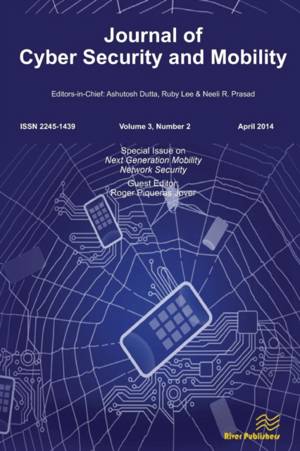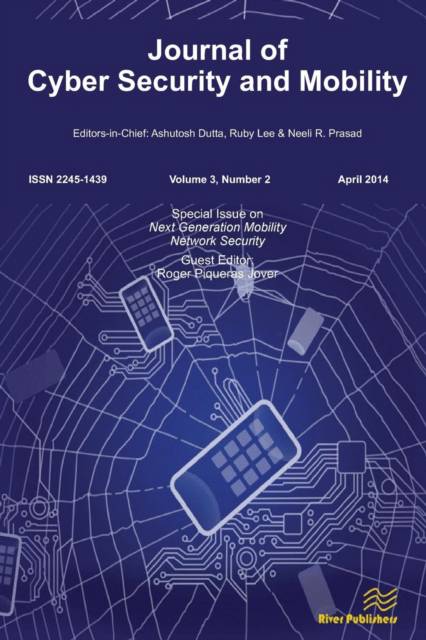
- Retrait gratuit dans votre magasin Club
- 7.000.000 titres dans notre catalogue
- Payer en toute sécurité
- Toujours un magasin près de chez vous
- Retrait gratuit dans votre magasin Club
- 7.000.0000 titres dans notre catalogue
- Payer en toute sécurité
- Toujours un magasin près de chez vous
Journal of Cyber Security and Mobility 3-2, Special Issue on Next Generation Mobility Network Security
Livre broché | Anglais
34,95 €
+ 69 points
Description
The Long Term Evolution (LTE) is the newly adopted standard technology to offer enhanced capacity and coverage for mobility networks, providing advanced multimedia services beyond traditional voice and short messaging traffic for billions of users. This new cellular communication system is the natural evolution of 3rd Generation Partnership Project (3GPP)-based access networks, enhancing the Universal Mobile Telecommunications System (UMTS). LTE introduces a substantial redesign of the network architecture resulting in the new eUTRAN (Enhanced Universal Terrestrial Radio Access Network) and the EPC (Enhanced Packet Core). In this context, the LTE Radio Access Network (RAN) is built upon a redesigned physical layer and based on an Orthogonal Frequency Division Multiple Access (OFDMA) modulation, which features robust performance in challenging multipath environments and substantially improves spectrum efficiency and capacity. Moreover, the new all-IP core architecture is designed to be more flexible and flatter, with a logical separation of the traffic related functions and the control and signaling functions. Over the last few years, researchers have published and presented potential vulnerabilities and attacks against the second generation of mobile networks, the Global System for Mobile Communications (GSM). Although technology, encryption schemes and security in general have drastically improved in LTE with respect of legacy GSM networks, security research should continue proactively working towards secure and resilient mobile communication systems. In this context, the cyber-security landscape has changed drastically over the last few years. It is now characterized by large scale security threats and the advent of sophisticated intrusions. These new threats illustrate the importance of strengthening the resiliency of mobility networks against security attacks, ensuring this way full mobility network availability. This special issue of the Journal of Cyber Security and Mobility addresses research advances in mobility security for LTE next generation mobility networks and other wireless communication systems. Two of the papers in this special issue analyze the threat of radio jamming. Lichtman et al. introduce a sophisticated reinforcement learning anti-jamming technique aimed at protecting frequency hopping wireless systems from jamming attacks while maximizing link throughput. Similarly, Kornemann et al. introduce a jamming detection mechanism for Wireless Sensor Networks (WSN), which are known to be substantially vulnerable to this type of attack. Focusing specifically on LTE mobile networks, Jermyn et al. perform a thorough simulation analysis of potential Denial of Service attacks against the eUTRAN by means of a botnet of malware-infected mobile terminals saturating the radio interface with large amounts of traffic. This type of malware infections and the connections of such a botnet to the malicious command and control servers could be detected with the system introduced by Bickford et al. This advanced detection scheme is capable to detect malicious activity in mobile terminals and proceed to mitigate and block the malicious applications. Finally, Alzahrani et al. present a very detailed and thorough analysis of the security research published over the last few years on mobile malware analysis, detection and mitigation. The valuable insights in this paper set a common ground and framework to facilitate research in this area, as well as to share results and easily replicate experiments.
Spécifications
Parties prenantes
- Editeur:
Contenu
- Nombre de pages :
- 148
- Langue:
- Anglais
Caractéristiques
- EAN:
- 9788793237056
- Date de parution :
- 30-04-14
- Format:
- Livre broché
- Format numérique:
- Trade paperback (VS)
- Dimensions :
- 156 mm x 234 mm
- Poids :
- 217 g

Les avis
Nous publions uniquement les avis qui respectent les conditions requises. Consultez nos conditions pour les avis.





